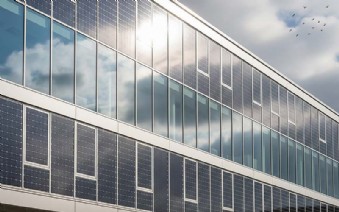-

Company
Product
ALUMINIUM MACHINES
PORTABLE MITER SAWS FOR ALUMINUM
PORTABLE COPY ROUTER MACHINES FOR ALUMINIUM
PORTABLE END MILLING MACHINES FOR ALUMINIUM
AUTOMATIC MITER SAWS FOR ALUMINIUM
COPY ROUTER MACHINES FOR ALUMINIUM
END MILLING MACHINES FOR ALUMINIUM
ALUMINUM CORNER CRIMPING MACHINE
DOUBLE MITRE SAWS FOR ALUMINIUM
AUTOMATIC SAWS FOR ALUMINIUM
BAR PROCESSING CENTERS
MACHINING CENTERS FOR ALUMINIUM COMPOSITE PANELS
NOTCHING SAWS
WEDGE CUTTING SAWS AND NOTCH CUTTING SAWS
MITER SAWS FOR ALUMINIUM
PVC PLASTIC MACHINES
PORTABLE MITER SAWS FOR PLASTIC
PORTABLE COPY ROUTER MACHINES FOR PLASTIC
PORTABLE END MILLING MACHINES FOR PLASTIC
MITER SAWS FOR PLASTIC
COPY ROUTERS FOR PLASTIC
END MILLING MACHINES FOR PLASTIC
WELDING MACHINES FOR PLASTIC
CORNER CLEANING MACHINES FOR PLASTIC PROFILES
DOUBLE MITRE SAWS FOR PLASTIC
BAR PROCESSING CENTERS
GLAZING BEAD SAWS
AUTOMATIC MITRE SAWS FOR PLASTIC
METAL MACHINES
MANUAL METAL SHEET BENDING MACHINE
MANUAL BENDING MACHINES
HYDRAULIC BENDING MACHINES
NON MANDREL BENDERS
PLATE BENDING MACHINES
BORDERING AND TRIMMING MACHINES
HORIZONTAL PRESSES
BELT GRINDING MACHINES
PIPE NOTCHING MACHINES
PIPE POLISHING MACHINES
LASER CUTTING MACHINES
PRESS BRAKES
VERTICAL TURNING CENTERS
MACHINING CENTERS
WOOD MACHINES
GLASS MACHINES
ROBOTICS SPECIAL MACHINERY
Service
Blog
Contact
Blog
PHOTOVOLTAIC WINDOWS

Photovoltaic Windows – Generating Energy While Letting in Light
Introduction
The energy transition requires innovative solutions that combine architecture, sustainability and technology. Alongside traditional solar panels on rooftops and façades, photovoltaic windows – also known as solar windows – are gaining importance. These innovative glazing systems not only provide daylight and visibility but also generate electricity through integrated solar cells. They represent the perfect blend of design, energy efficiency and ecological responsibility.
What are photovoltaic windows?
Photovoltaic windows are transparent or semi-transparent glazing units equipped with solar cells. Unlike conventional windows, they serve a dual purpose: allowing light to pass through while converting solar energy into electricity.
Technical approaches include:
-
Thin-film solar cells: integrated into the glazing, partially transparent.
-
Organic photovoltaic cells (OPV): lightweight, flexible and available in colours.
-
Micro solar cells: embedded in glass, almost invisible.
-
Nanotechnology coatings with photovoltaic properties.
Advantages of photovoltaic windows
Energy generation
Windows become active power producers and reduce dependence on the grid.
Space efficiency
They make use of existing building surfaces, requiring no extra installation area.
Sustainability
They lower CO₂ emissions and support energy self-sufficiency.
Design flexibility
Available in transparent, tinted or coloured versions, adaptable to modern architecture.
Multifunctionality
Besides generating energy, they can provide thermal insulation, solar control and soundproofing.
Disadvantages
-
Higher costs compared to standard windows.
-
Lower efficiency rates than conventional solar panels.
-
Dependence on sunlight and building orientation.
-
Technology still developing and not yet standardised.
Materials and technology
-
Multi-layer glazing with integrated solar cells.
-
Frames in aluminium, wood or wood-aluminium.
-
Smart control systems combining shading and energy production.
-
Storage solutions for generated electricity.
Applications
-
Residential buildings: windows generate energy for household use.
-
Office and commercial buildings: large glazed façades offer great potential.
-
High-rises: façades as vertical power stations.
-
Winter gardens and glass roofs: combining natural lighting with solar power.
-
Public buildings: schools, universities and town halls as sustainability showcases.
Technical features
-
Semi-transparent modules with high light transmission.
-
Integrated wiring in the frames.
-
Connections to building networks and storage batteries.
-
Smart-home integration.
-
Optional solar control and safety glazing.
Future trends
-
Higher efficiency rates with advanced solar cell technologies.
-
Fully transparent photovoltaic glass indistinguishable from conventional glazing.
-
Integration into smart city energy networks.
-
Customisable colours for façade design.
-
Recyclable materials for sustainable life cycles.
Conclusion
Photovoltaic windows are a pioneering solution in sustainable construction. They reduce energy costs, increase building independence and combine aesthetics with functionality. Although currently more expensive and less efficient than rooftop solar panels, their potential for the architecture of the future is immense.
Investing in photovoltaic windows today means investing in energy efficiency, innovation and environmental responsibility.
- photovoltaic windows
- solar windows
- buy photovoltaic windows
- photovoltaic window prices
- solar window technology
- photovoltaic window manufacturers
- photovoltaic window installation
- photovoltaic windows renovation
- photovoltaic windows new build
- advantages photovoltaic windows
- disadvantages photovoltaic windows
- photovoltaic window architecture
- energy generating windows
- modern photovoltaic windows
- transparent solar windows
 GERMANY
GERMANY ENGLISH
ENGLISH FRANCE
FRANCE SPAIN
SPAIN PORTUGAL
PORTUGAL








